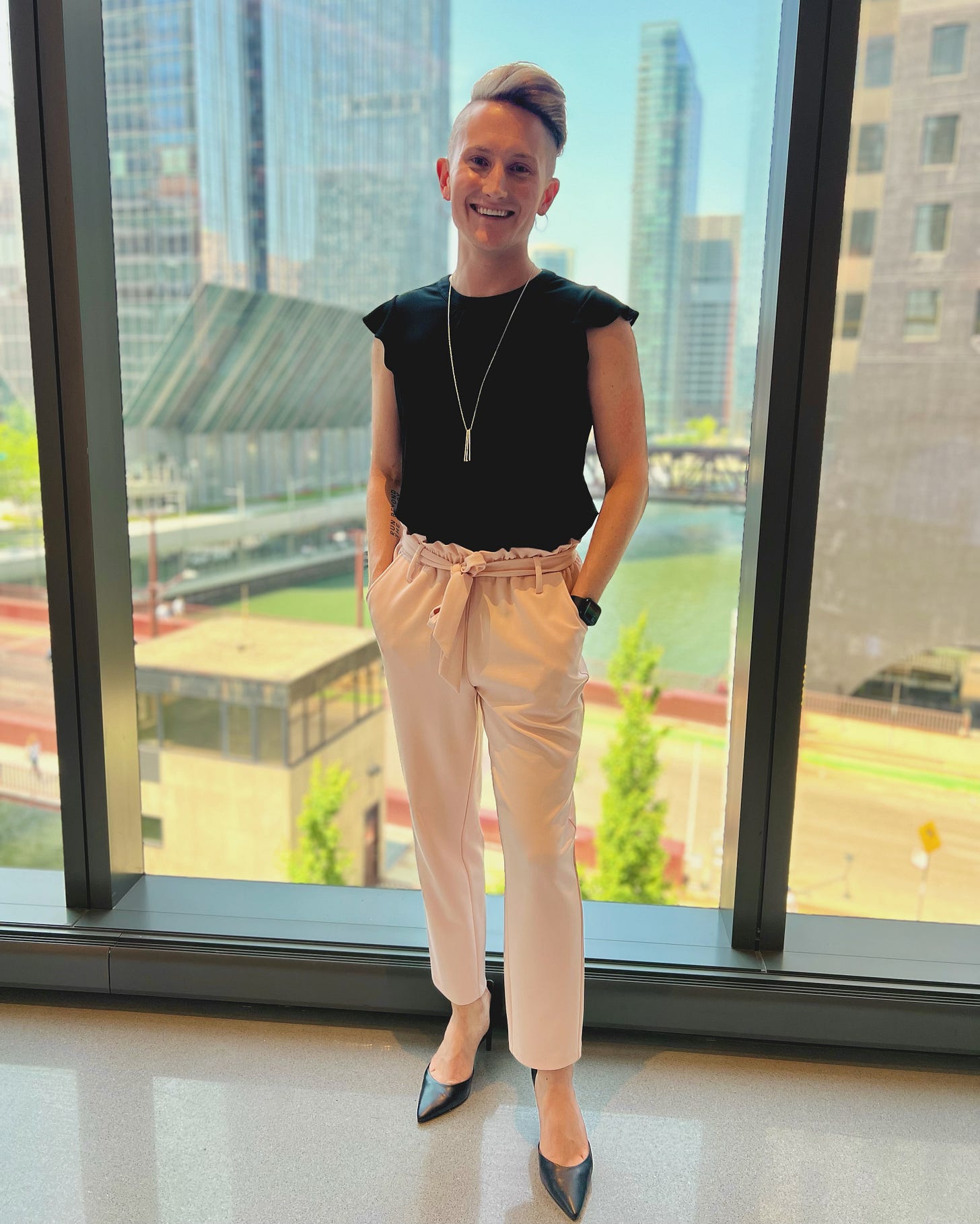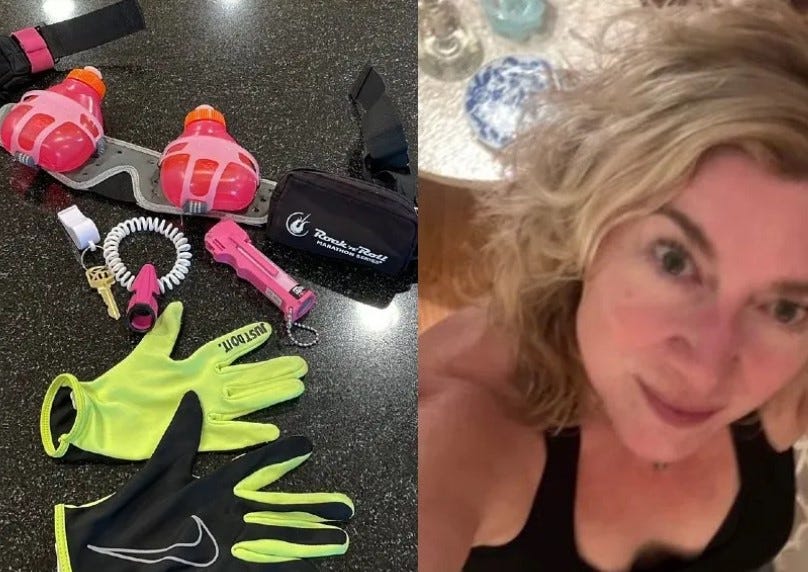‘I found running could be done with a group that affirms and encourages you, no matter who you are, what your gender identity is, or your sexual orientation is.’
Seattle Frontrunner Jake Fedorowski on why non-binary inclusion is so important in running - and how race directors can make it happen
As a young person, Jake Fedorowski has undertaken two major journeys in their life.
Both have brought them joy and fulfilment, making them the person they are today.
The first - and most important - was the voyage of self-discovery that saw them discovery their non-binary identity, growing out of a world which seemed to dictate a life of heterosexual marriage and children into one which matches their identity.
The other, perhaps less profound but nonetheless fulfilling, was their journey into the world of running.
Along the way, these two elements of Jake’s life have collided to form a central part of who they are and spark a quest for inclusivity within running and the world in general.
What does being non-binary mean?
The dictionary defines non-binary as ‘relating to or being a person who identifies with or expresses a gender identity that is neither entirely male nor entirely female’.
But to understand that definition, people need to know the difference between gender identity and sex as assigned at birth.
Sex at birth is defined by biological indicators, with male, female and intersex categories.
Gender identity, meanwhile, is what Jake Fedorowski calls “that more innate feeling, the internal sense of who you are”.
Typically, gender identity is broken down into cisgender - those whose gender aligns with the sex they were assigned at birth - and transgender.
Jake said: “Many times people think of trans women and trans men, but we have to get to a place where trans women and trans men are just women and men.”
Non-binary people, however, are those whose gender identity falls outside, or in between, that of men and women.
It’s also important to note that gender identity doesn’t have anything to do with sexual orientation, where people of all genders and sexes can be - for example - heterosexual, homosexual, asexual and so on.
“It’s this wide spectrum of many identities, and they are all crossing over each other,” Jake said.
“It’s really kind of exciting to me. It’s fun to really get to know different people and all the different identities that they are made up of, because that's what makes us who we are.
“That can be a really beautiful thing. But we also see a lot of people who use that to put other people down or try to hold them back from any sort of opportunities.”
Growing up in a household where everyone was cisgender and heterosexual, Jake naturally assumed their path would be to grow up, marry a woman and have children.
“There was this trajectory that was put upon me because I was assigned male at birth, and therefore I was a boy, and I was going to be attracted to women,” they said.
It took many years before they realised the course set for them did not fit with how they felt.
Initially, they felt they must be homosexual - “I thought, ok, yes, I checked the box” - but things still felt wrong.
It wasn’t until they reached their 20s that Jake started to have “larger internal dialogues about who I was, specifically pertaining to my gender”.
At the time they were hosting a podcast, talking to queer people about their journeys and how they had come to be proud of their identities.
Jake recognised many of their experiences in their own journey, and started to apply the vocabulary they were hearing to themself.
“I realised this is the word that I have been feeling for 20-something years.
“And I finally felt comfortable, in using that and being able to share that and say, this is who I am.
“There are kids out there. There are teenagers. There are people who are growing up who don't have that vocabulary or don't see that representation.
“I can only imagine if I were to have had that vocabulary or that representation at a younger age, how different my life would have been.”
While the young Jake had struggled to discover their identity, they also found it hard to fit into a sporting landscape that favoured cisgender boys.
Running was no different - “I loathed going out to run the mile” - and Jake became the ‘kid who wouldn’t even go outside at recess’.
They said: “A lot of that goes to this deeper issue, which was because I was assigned male at birth, and I was a boy, that meant I had to like sports.
“And so my parents, put me into all these different sport spaces. I tried hockey, I tried baseball and soccer and swimming and tennis. Nothing really ever stuck.”
Jake started to assume sport was just not for them, but as they grew older they began to find being competitive and active did fit in with who they are.
“What was happening at that younger age was the environment in which I was being placed into was not a safe or affirming space for people who were, quote unquote, different. Who didn't fit in.
“And now I look back, I'm like, oh, it's because I was this non-binary kid among all these other, most likely CIS boys, and it just wasn't a space that I could thrive in.”
It was only when Jake - by then in their 20s - started college in Chicago that they discovered a love of sport.
Even then, they concentrated on individual sports like cycling, rollerblading and running.
“Those were things I could just do on my own,” they told Running Tales.
“I didn't have to worry about fitting into a team or club. I could just go out and be with myself and run and move and be active.”
When they moved to Seattle, running suddenly became more than an individual pursuit.
Also on Running Tales:
Jake joined Seattle Frontrunners, an LGBTQIA+ running and walking club, where they found they were able to participate fully as themselves as part of a group.
“I found this individual activity could be done with a group that affirms and encourages you, and cheers you on, no matter who you are, what your gender identity is, or your sexual orientation is.
“We see all of those different identities coming into this space, and we celebrate them. We encourage folks to live and exist authentically in those spaces.
“Running really didn't come until later in life. And it's wild. When I was running by myself and figuring things out in college, 5k was a lot.
“And then I joined the Frontrunners, and eight months later ended up running my first marathon.
“Going back to that kid in elementary school, who would protest before running the mile, to think that kid would run a marathon someday, that kid would have just laughed that off.
“But it really speaks to the power of running with a community and being in a positive, affirming space that allows you to participate authentically and what that can do, what doors that can open up for an individual.”
But while Jake had discovered a welcoming community at Seattle Frontrunners, fitting in with the wider running community was still proving a challenge.
Encouraged by their progress with the group, they started to enter races and become more involved in the wider aspects of the sport, but was “hit in the face” with the realisation other spaces in the running world weren’t as inclusive.
They said: “I started to realise there was this larger issue within the industry where everything is based on the gender binary of men and women.
“All the divisions and awards and prize money and apparel, and policies and facilities. Everything is gendered.
“Even the language is gendered in all of these spaces and has been that way for so long. Where do people who fall outside of that fit?
“People who are non-binary or even trans, who are just looking to participate in the divisions which they identify in and that they want to be a part of, how do these people fit into this industry that for so long has shut all of us out?”
It was then Jake’s journey took a fresh turn. They realised they could use their platform as a non-binary runner to start asking questions.
One area they immediately looked at was increased participation from non-binary runners at races.
They found race directors were keen to be more inclusive, but weren’t always sure how to do so.
The first thing Jake highlighted was that most races only had men’s and women’s divisions. The same issue applies to race records, while issues often arose with announcers at the start and end of races carelessly labelling non-binary people as either men or women based on their appearance.
From there, Jake was inspired to write the Guide to Non Binary Inclusion in Running, a 24-page resource which gives hints and tips to race directors, organisers and others on how to be more welcoming to non-binary people.
Jake said: “There’s so many structural things that have to be done - the prizes, awards, divisions and the apparel.
“I’m encouraging folks to talk to others before making assumptions, before starting to assign things because that's what we do as humans. We assign labels to people because it makes it easier to sort through things in our brain.
“But don’t make that assumption right away, have a conversation or ask the question or do the research to figure out what pronouns does a person use?”
Of course, conversations around the participation of non-binary and trans people in races is often accompanied by questions around fairness when it comes to qualifying times, race winners or prizes.
For example, when it comes to race qualifying times should a non-binary person have to reach the qualifying time of the sex assigned to them at birth?
Jake acknowledges there are tricky questions to answer, but they are keen to say that for the vast number of race participants winning or prizes is not the goal.
“So much of the conversation is about the top finishers,“ they said.
“The prize money, the awards, the qualifying times. But that’s for the quote unquote fast runners, right? The small percentage at the top.
“When you have a race for, say, 60,000 people, that is the smallest group of people at the top that we're getting stuck on.
“Like, oh, well, we can't do this work because of whatever it's going to do to the top three or the qualifying. But think about all of the other people, the 55,000 other people in that race that might actually get an opportunity to just participate and have that joy of running in a division that matches their gender identity.
“That, to me, is the important part of this. And we can't stop or refrain from doing any of this work because we think, oh, someone's going to get more money at the top, or this person's going to qualify or this person's not.”
It sounds like Jake Fedorowski has set out on another journey. Given how far he has already come you wouldn’t bet against him running this latest race all the way to a positive finish.
Thanks for reading and listening to Running Tales. We couldn’t do this without your support - please back us to keep going by…







